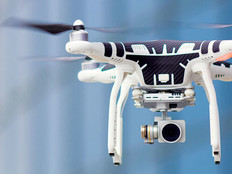IT Pros Are Adopting IoT, AI More Than Other Emerging Tech, Survey Says
Though they are often discussed in the same breath, IT professionals view emerging technologies like the Internet of Things, artificial intelligence, virtual reality and 3D printing very differently, according to a survey from Spiceworks, a professional network for IT workers.
The survey found that organizations have adopted, and plan to deploy, IoT solutions more than other emerging technologies. AI is not being used much today but companies to plan to use it more in the next few years, according to the survey, “Future of IT: Hype vs. Reality.”
The survey was conducted in October and included 566 respondents from North America, Europe, the Middle East, and Africa. Respondents are among the millions of IT professionals in Spiceworks and represent a variety of company sizes, including small and medium-sized businesses and enterprises. Respondents come from a variety of industries, including manufacturing, healthcare, nonprofits, education, government and finance.
IT pros expect IoT devices and AI to have the largest impact in the workplace, but think VR will have the least impact, according to the survey. Fully 80 percent of IT professionals surveyed said IoT devices will be useful to their business practices in three to five years, and nearly 60 percent said the same for AI.
IoT and AI Attract the Most Interest
IoT adoption has been growing in multiple industries, with healthcare, nonprofits and technology firms leading the way. As wireless connectivity grows more pervasive, and perhaps as multiple IoT connectivity platforms consolidate, adoption is expected to increase.
Nearly 20 percent of all organizations surveyed have deployed IoT technologies on their network today and an additional 40 percent plan to adopt them. The healthcare industry has the highest adoption rate, at 28 percent, with an additional 50 percent planning to adopt it.
However, according to Spiceworks’ 2016 IoT Trends report, security is the top concern when it comes to connecting IoT devices in the workplace. That separate report found that 84 percent of IT professionals are concerned about the growing number of entry points into their network, and 70 percent are worried about the lack of security measures put in place by IoT manufacturers.
When it comes to AI, only 3 percent of IT pros said they have deployed it in their organization today, and adoption in the next five years or so is estimated around 25 percent. However, once respondents were prompted with more specific AI examples like intelligent digital assistants (e.g., Microsoft’s Cortana and Amazon’s Alexa), 19 percent of IT pros reported using these tools in their organization and another 46 percent indicated they’re planning to use them. Further, 21 percent of IT professionals are planning to implement Microsoft Cortana in the next 12 months, likely through Windows 10 deployments.
Spiceworks notes that this may be an indication of a disconnect between how the wider market and IT pros define AI.
The survey found that 19 percent of organizations use intelligent digital assistants for work-related tasks while relatively fewer reported using machine-learning technology (8 percent) or business analytics with AI (8 percent).
However, more organizations are planning to adopt AI technology over the next five years. In fact, 60 percent plan to adopt machine learning, and 72 percent plan to deploy business analytics with AI.
When asked about their biggest concerns related to AI in the workplace, most IT professionals cited security and privacy issues (48 percent) as their top concern. But despite these doubts, nearly 70 percent of IT professionals believe AI and machine learning will enable more time to focus on strategic IT initiatives. Only 14 percent of IT professionals believe AI will put IT jobs at risk.
“IT professionals are rightly concerned with the practicality of integrating emerging technology in the workplace, particularly when it comes to VR and 3D printing,” Peter Tsai, an IT analyst at Spiceworks, said in a statement. “Many organizations are struggling to find viable use cases for VR and 3D printers that will justify the costs. With IoT and AI, while many understand the potential benefits for businesses, IT professionals are more concerned about potential security risks over costs, especially in light of recent DDoS attacks originating from vulnerable IoT systems.”
3D Printing, VR Seen as More Niche
The survey found that 11 percent of organizations are currently using 3D printers, and an additional 22 percent plan to adopt them. The education industry has by far the highest current adoption rate (45 percent). The manufacturing and construction/engineering industries came next at 17 percent.
The manufacturing industry has the highest planned adoption rate (36 percent), as the technology can help companies rapidly prototype parts, saving time and money.
Just 7 percent of organizations currently use VR technology and 13 percent plan to adopt it. Although only 5 percent of organizations in construction and engineering use VR today, the industry has the highest planned adoption rate (27 percent), according to Spiceworks, likely because architects and engineers can use VR to visualize a building or product prototype.
However, most IT professionals cited cost (62 percent) as the primary barrier to adoption, while 46 percent believe there’s a lack of use cases for VR in the workplace. One-third of those surveyed are concerned about the graphics and computing power required.









